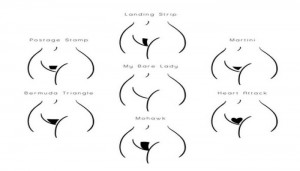
Before you rush to judgment, raise an eyebrow, or wrongly presume that this is a rather taboo or even pornographic essay, relax. I’ve promised to summarize parts of the book titled The Naked Woman by Dennis Morris and share with you some of my thoughts on his thorough interpretation of the female body because knowing more about our body gives us the ability to better understand its functions. I feel particularly passionate about this information because I’ve made it my business to encourage women to better appreciate their looks, and view themselves in a more positive light when so many have felt discouraged and unattractive at times. It’s no surprise that they have felt this way when modern society has had a successful campaign against aging—ultimately rewriting the definition of beauty. They continuously promote the looks of youth, or the perpetual chase after one’s youthful appearance as the preferred, more acceptable look. A fact that has rendered so many women disappointed with their looks. My mission is to educate and encourage women to accept and love themselves at any age, and any stage of their life. Previous blogs have discussed other body parts, so obviously the pubic region is no different and deserves a closer look as well.
So why do you have pubic hair in the first place? Morris explains that pubic hair is a visual signal; in primeval times it indicated that a developing girl had transitioned into a sexual adult. With no sign of pubic hair, the men knew to stay away from the girls, but with its appearance it triggered a sexual response. Another reason for having pubic hair is to trap the body’s scent. My reaction to this information evoked a loud sneer, an ugh, and even an oy, but it was not the first time that I heard of this explanation. Morris goes on to explain how our skin glands in this region of the body secrete pheromones, the very scent that males are unconsciously attracted to. The thicker and more coarse the hair, it is better able to trap our scent. Hairless skin for that matter fails to do the job. In primeval times when people tended to be naked, that natural scent was fresh; today, however, we all wear tight undergarments over our bodies, this can easily lead to bacterial decay and obviously to an undesirable odor. Interestingly, for this reason we must wash more often than tribal people if we are to maintain those ancient scent signals.
A very talkative gynecologist once told me of this exact fact, she said that it’s a shame that women go out of their way to eliminate their “natural scent.” They wash much too much, spray themselves with artificial scents that remove altogether that “real woman smell.” I often think of her words, but still opt for a proper scrub all the same. Another use for pubic hair is to act as a buffer during sexual contact. However, how many women actually suffer any sort of injury when they routinely shave their pubic region? Others have suggested that the pubic hair acts as a modesty concealment” of the genitals—that it protects against the cold, and absorbs perspiration that drips from the front parts of the body. A German anthropologist had once written about a tribe living in the South Pacific region, where the women were in the habit of wiping their hands on their pubic hair in the same way we would use a towel!
In ancient times as well as modern times, people have always been consumed with modifying their pubic hair, either by use of dye, or trimming it, removing it completely, or decorating it. Some Puritans have opposed any alterations in that region, suggesting an unhealthy obsession with one’s sexuality. Feminists have said that the pruning and grooming of the pubic region is a sort of pandering to men. Hedonists see the natural state of the pubic region as erotic since it is a primeval sign or signal of a female’s readiness to mate. Strangely, some Puritans have also supported the removal of the hair, seeing it as dirty and smelly. Displaying a smooth genital area, and childlike, promotes a non-sexual reaction and for this reason many classical statues of females are completely smooth.
There is a great sexual appeal to pubic hair removal and the visibility of the vertical slit—to the male it is a stronger visual signal. No hair transmits a virgin-like innocence, but some have taken this to the extreme by accusing anyone liking this look to stepping in the direction of kiddie porn. Realistically, the fact is that men who prefer the smooth look are only attracted to fully developed women and not children. Just because they like something that signifies virginity, doesn’t necessarily mean they would respond in the same way to an under-aged girl, says Morris. Under the same token, one could use the irrational argument: that women who prefer their sexual mates to be clean-shaven have a preference for under-aged boys . . . a ridiculous claim.
The more revealing bathing-suits of the 1920s
The removal of hair is not a modern practice; Egyptian men and women were consumed with their looks and the removal of hair from their bodies, using wax made of honey and oil. It is believed that even King Solomon disliked pubic hair, and when Queen Sheba came to him she was asked to remove all traces of her pubic hair before he bedded her. In Ancient Greece, they too preferred the bare look, but their method of getting rid of hair sends chills down my spine, opting to pluck it out, or by singeing it with a burning lamp, or hot ashes. The Ancient Romans had the same preference, using tweezers or wax the moment the very first hairs showed signs of growing. Crusaders in the Holy Land discovered that Arab women removed their pubic hair, and liking what they experienced they brought this fashion back to Europe. In the 16th century, Turkish women had the pleasure of getting their hair removed in special rooms allocated for this very purpose in the public bathing houses. In Victorian times, the removal of hair was unheard of among the general public, and did not resurface until the 1960s. During the 1970s, the feminist movement swayed women to return to their natural look. By the end of the 21st-century, pubic grooming was back again, and the newly designed bathing suits, with the leg cut very high, forced women to get rid of all that extra hair.

The 21st-century terminology for the removal of pubic hair is quite creative:
The bikini line – is when pubic hair covered by one’s bathing suit is left alone and only the straggling hair is removed.
Full Bikini – when a small amount of hair is left on the mons pubis.
The European – all of it is removed except for a little mound.
The Triangle – all hair is removed except for a little triangle, the point aiming toward the genitals.
The Moustache – everything is removed except for a rectangular patch above the hood of the genital slit.
The Heart – the pubic tuft is shaped into a heart and dyed pink.
The Landing Strip – trimming the hair into a narrow vertical line, while all other hair is removed.
The Playboy Strip – all hair is removed apart from a long narrow rectangle of hair 4 cm wide. Why this measurement you ask? It’s got historical origins believe it or not: exotic dancers in Georgia had to leave a strip of hair that was two fingers in width if performing naked. Atlanta lawmakers stated that this width was considered sufficiently modest. Lawmen who randomly checked the girls would sometimes send them home if they had disobeyed the law by removing too much of their hair.
The Brazilian – this fashion began in the Copacabana Beach in Rio where the highest cut bikinis first appeared. Seven Brazilian sisters moved to New York and opened a beauty salon offering pubic hair removal as one of their treatments. Soon enough this look became popular among actresses, closely followed by the general public, and the “the Brazilian” became a coined phrase. They would wax off everything apart from a tiny strip of hair.
The Sphynx – leaving a hairless pubic region, also known as the Hollywood.
Just in case you needed the visual
One cannot describe all of these fashions in such detail without mentioning the merkin, which if anyone does not already know, is the pubic wig. Historically, the merkin was used to mask venereal diseases that disfigured the genitals. Records show that they were popular in the 16th century with the addition of decorations such as, jewelry, flowers, and ribbons that were attached to the piece.
When reading about this subject matter I could not help but think about one of my neighbors when growing up in Israel all those years ago. I remembered how I would always bump into her when she returned from her afternoon swim in our nearby beach. She never bothered with a cover-up, and proudly paraded from her car into our building, holding on to her towel and, something else for that matter. I will never forget the sight of her orange-colored pubes sticking out from both sides of her crotch area—they were long and very red. She always insisted on a stop and chat, but I could never concentrate on anything she said; I could not understand why her husband or children did not alert her to the fact that she was making a fool of herself, or why she never noticed what was going on down there herself. Hair and beach go hand in hand with some of my early childhood memories of the Israeli beach scene, but this particular neighbor definitely left her mark on me.
Another thought that came to mind as I was reading this chapter was of a girlfriend who once argued with me that calling the tuft of hair on top, a Hitler, was a thoughtless act on my part, especially because both of us had relatives who had perished in the Holocaust. This of course was an extreme reaction, but I vowed to never nickname a certain buzz or cut after any other dictator for that matter, because who knows whether or not I would then be insulting someone else.
If you’ve enjoyed my writing and interpretation of ideas, then be sure to check out my books.


Landing strip? Wow. I ordered The Diary of a Wrinkle and I can’t wait to read it.